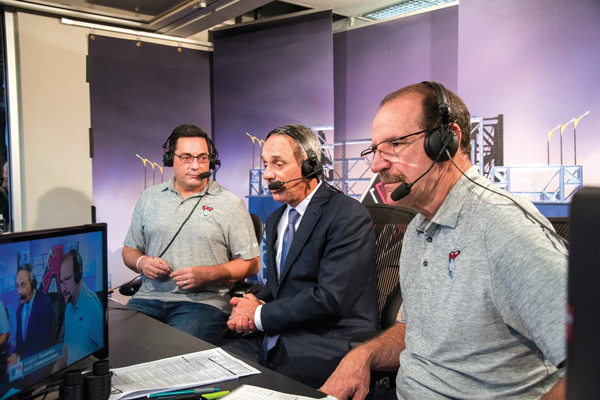Editor’s note: This column is revised from the print edition.
What happens if the cable TV universe keeps shrinking and digital TV companies decide that they don’t need to invest in sports content?
That’s a realistic scenario that threatens the huge amount of media rights fees that has made all sports much richer over the past decade.
That’s not to suggest that there’s a media rights bubble that’s about to burst. But it could mean that the huge annual increases that the bigger leagues have enjoyed will flatten.
It’s an issue that’s clearly on the minds of league executives, who are trying to prop up the traditional TV business while enticing digital companies to get hooked on their product the same way TV companies have. If digital TV companies such as Amazon, Facebook or even Netflix decide that they want to use exclusive sports to stand out, leagues will continue to rake in huge amounts in rights fees.
The problem is that the TV business still is booming for them. And that TV business is under siege, with aging demographics and declining subscriber bases.
Discovery President and CEO David Zaslav outlined the issue in his first question to a panel of four league commissioners at the Paley Center in New York City earlier this month, citing numbers that show the top sports leagues are bringing in $22 billion per year in rights fees from TV networks. And he pointed to the $9 billion per year in retransmission consent fees broadcasters get, mainly on the back of sports.
“The way people consume content is changing,” Zaslav said. “Their behavior is changing. The platforms that they consume it on is changing. And the economic models are changing. These are issues that these [commissioners] are going to have to face.”
MLB Commissioner Rob Manfred spoke of the need to put baseball content on all platforms, while not undermining the cable business. MLB clubs, in particular, bring in a ton in rights fees from regional sports networks, which are the priciest channels on cable systems and ones Manfred described as “one of the most vulnerable parts of the bundle going forward.”
 |
MLB Commissioner Rob Manfred (center) said the league continues to increase content on its platforms.
GETTY IMAGES |
“We are very aware of the need to preserve the cable model,” Manfred said. “The cable model is going to continue to exist. It’s not going to be the same size. It might not look exactly like it looks today. But it’s going to be there. We have tried to do things that we see as additive to our business without causing undue harm to that existing model.”
That includes streaming out-of-market games via MLB.tv and licensing out-of-market games to digital media companies like Facebook and Twitter, Manfred said.
“We’re doing those games to try and deliver the product in a way that gets to people who have either never been in or who have opted out of that cable model,” he said. “Whether you can replicate your economics, it depends on where the mix settles between the core cable model that remains and some of these new media and how creative people are in terms of monetizing on those platforms.”
NFL Commissioner Roger Goodell sounded a similar theme. The NFL has dabbled with digital media companies — selling Yahoo live streaming rights to a single game in 2015, selling “Thursday Night Football” streaming rights to Twitter last season and Amazon this season.
But the league still is committed to broadcast television, which has the widest reach. Even as cable TV channels grew through the early 2000s, the NFL was alone among leagues in maintaining its commitment to broadcast TV.
“We’re a little different because primarily our product’s on network television, which we believe in — we believe that its best days are still ahead, and it still draws a huge audience,” Goodell said.
The NFL’s pitch to digital media companies is simple: look at ESPN and Fox Sports. NFL executives — and many media executives, too — essentially believe that those networks were created on the back of the NFL.
“As we look at all the new players out there, we’re trying to prove that our content actually can make networks,” Goodell said. “They can create value for their consumers and for the company. We’re starting to see that. Ultimately, live sports will do just what it did for cable television, just what it did for satellite television, and it will make platforms.”
NBA Commissioner Adam Silver, whose league just started a nine-year TV deal worth $2.6 billion annually, said that NBA content on digital platforms has to be presented differently than TV. He cited the popularity of smartphones as creating a new audience and drawing new fans to the league.
“The conversations we all are having is not about taking that same feed and putting it on Facebook or wherever else,” Silver said. “How are we going to change the experience for our fans? How are we going to take advantage of the kind of engagement that they have?”
NHL Commissioner Gary Bettman agreed.
“The bigger concern … is making sure that millennials and Gen Zs continue to want to watch team sports,” he said.
John Ourand can be reached at jourand@sportsbusinessjournal.com. Follow him on Twitter @Ourand_SBJ.





